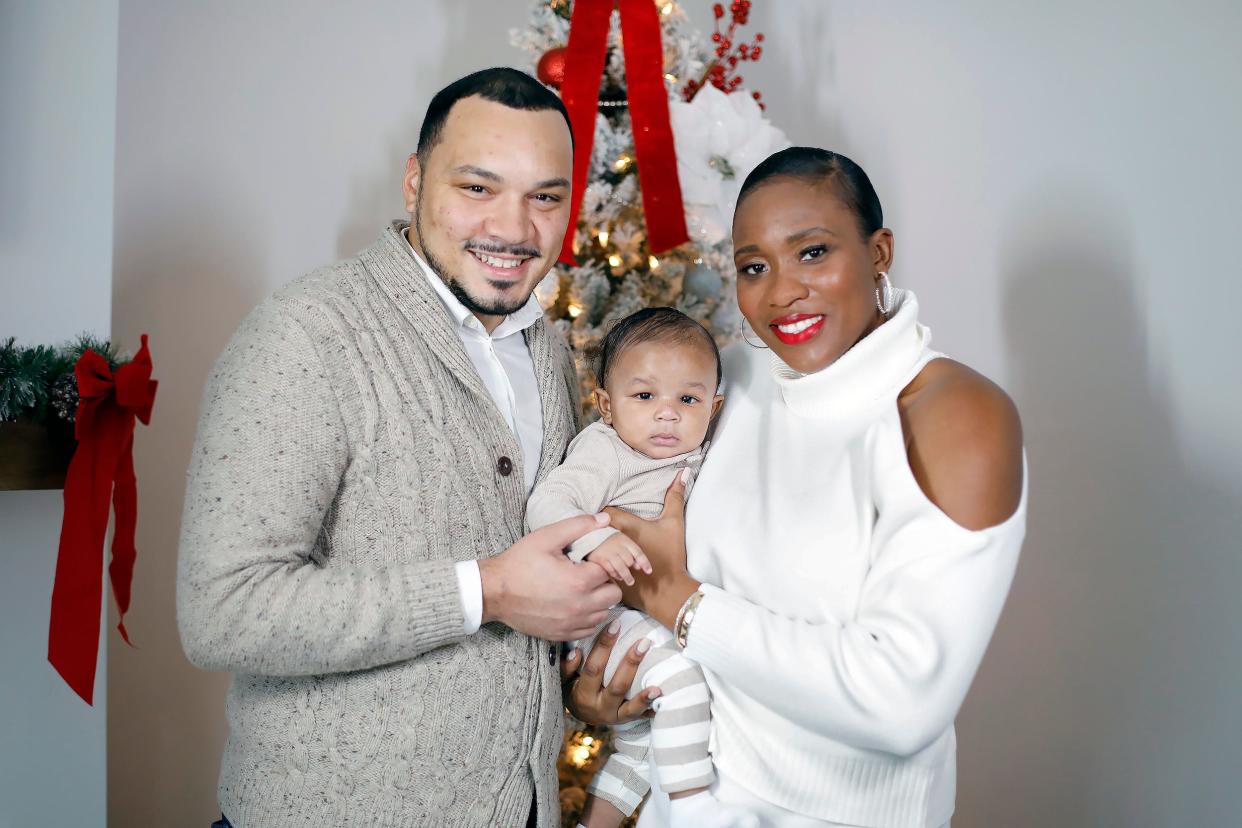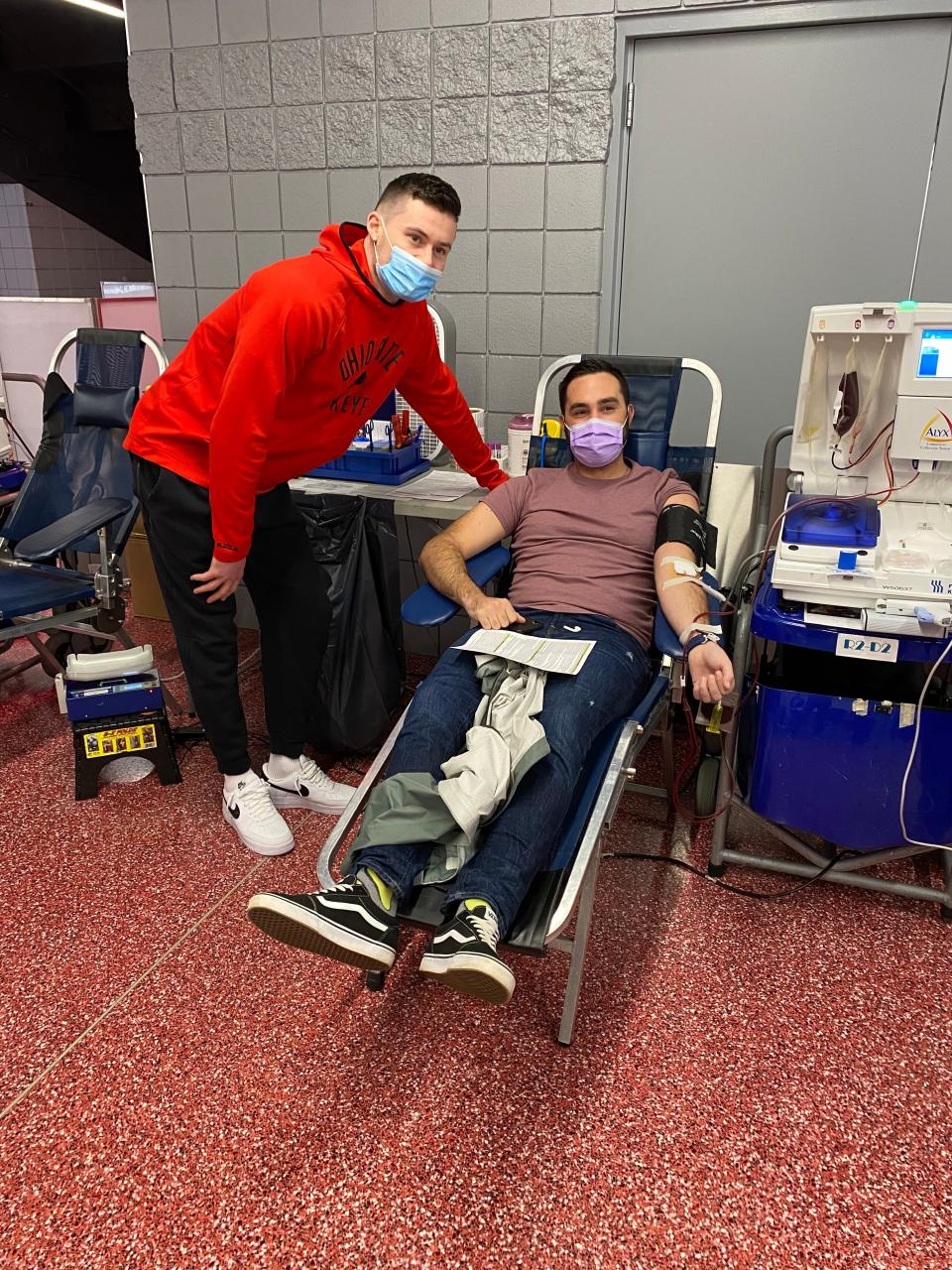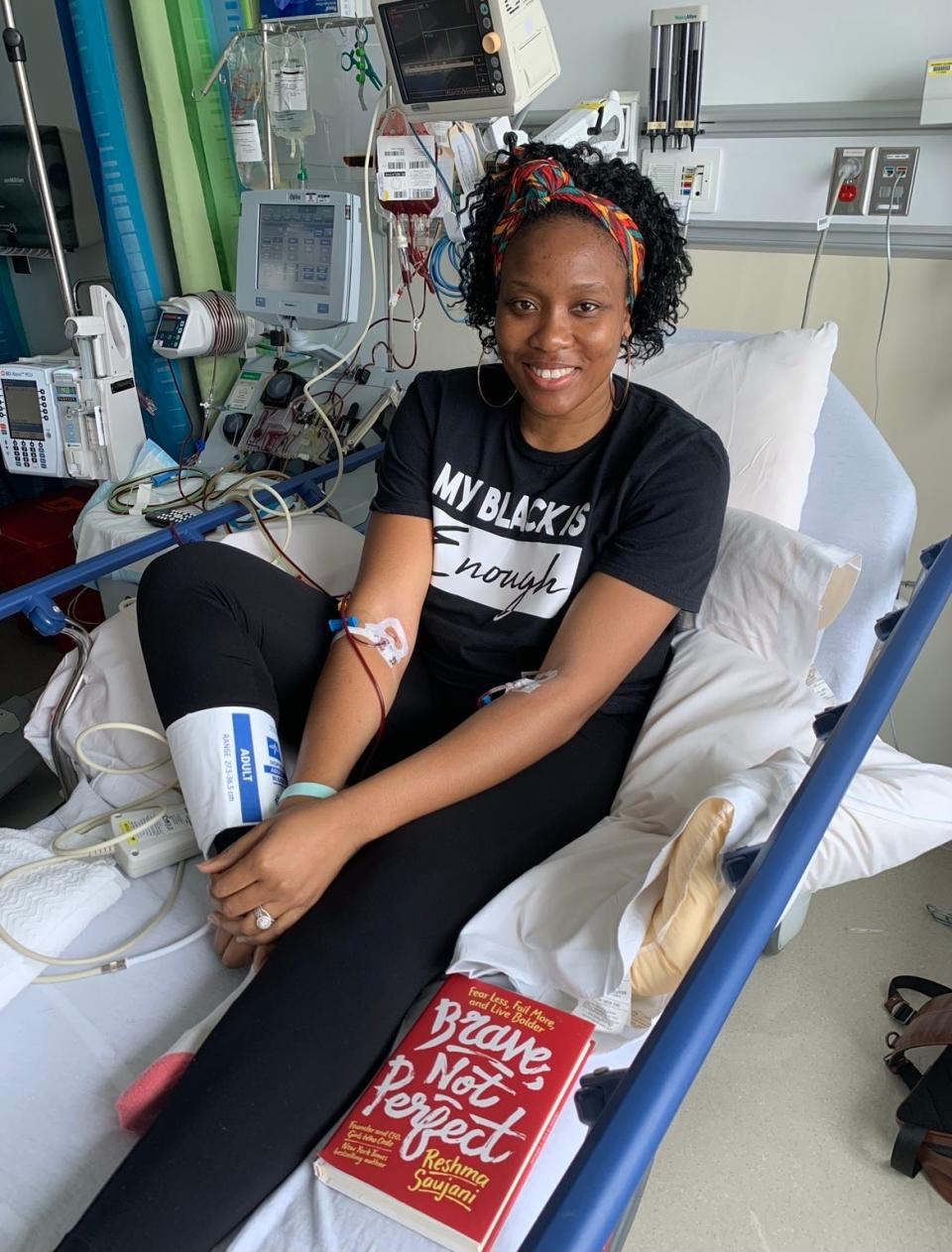Ohio State, Michigan battle will be bloody starting today

Nicholas J. Bankston is a Columbus City councilmember and president and chief executive officer of Gladden Community House.
The Rivalry is on again — not the one that’ll be played out a few Saturdays from now in Ohio Stadium, but the one happening for the whole next month all over campus and around town: the annual OSU-Michigan Blood Battle, where the prize is saving lives, so everybody wins.
More:Ohio State's Kyle Young, Chris Holtmann team up to raise awareness of blood battle
That’s not to say that I don’t want us Buckeyes to come out on top, by donating more units of blood than those folks Up North.
I’m as competitive as the next guy. But what I care most about is the chance for the Blood Battle to raise awareness of the urgent need for blood donations.
The whole process, including registration and recovery time, takes about an hour. You can walk in or make an appointment through Versiti, the primary supplier of blood products to The Ohio State University Medical Center, the Arthur G. James Cancer Center and the Richard J. Solove Research Institute.
How to help Ohio State beat Michigan
The kick-off event is 10 a.m. to 6 p.m. today, Oct. 26 at the Schottenstein Center.
There are mobile drives scheduled every day through Nov. 23 (see a schedule at versiti.org/events/blood-drives/osu-vs-michigan-blood-battle-102622 ); in addition, any blood donated at Versiti’s donor center in Hilliard during that time period will count toward our Battle performance.
Why I am involved?
I have some very personal reasons for giving blood. Beside my Buckeye pride, I know that donated blood keeps my wife alive and relieves her of the pain of sickle cell disease.
More:Sickle cell patient becomes vocal advocate for importance of blood donations
Like many sickle cell patients, Habiba goes to a hospital once a month to spend five to eight hours receiving a blood transfusion. The process replaces her red blood cells, which are hardened and misshapen (curved, like a sickle) because of an inherited genetic trait.
More:Law would help those fighting deadly diseases tackle out-of-pocket costs |Opinion
Without the transfusions, those sickle-shaped cells could essentially get stuck in small blood vessels, causing painful blockages that can lead to infections and even strokes.
Thanks to the transfusions, she has a full and healthy life and a successful career. Habiba and I do all we can to encourage blood donation — especially among African Americans, because sickle cell disease is most common in people with roots in sub-Saharan Africa and African American people are most likely to have the Ro blood subtype that is ideal for sickle cell patients.
Why is blood needed?
Of course, all types of blood are needed and there are many demands for blood other than sickle cell:

In U.S. trauma centers, hemorrhage is the most common cause of death within the first hour of arrival.
Severe blood loss is the cause of 80% of operating-room deaths and nearly half of deaths in the first 24 hours after an injury.
Blood transfusion is critical in the treatment of patients fighting cancer and for many babies and moms.
And here’s the thing: There’s only one way to get blood. It can’t be made in a laboratory. (The same goes for organs, tissue and bone marrow.)
There is no substitute for blood donation, every day of every year. The products are perishable and they must be available when sick or injured people need them.

We have always been subject to blood shortages in the U.S. and the COVID-19 pandemic made things worse, with economic disruptions and labor shortages. But this is one area where we can’t blame supply-chain problems; for lifesaving blood products, we ARE the supply chain.
Donation slows down more at certain times of year, including the holidays, when people are busy. My hope is that a little competitive motivation will inspire some central Ohioans who have never donated before to come out for the Blood Battle and that, when they learn just how easy it is — and understand that that their precious gift can save three lives — they’ll get in a new habit and become regular donors.
Because, win or lose, when the Blood Battle is over, the constant need for donation will go on.
Nicholas J. Bankston is a Columbus City councilmember and president and chief executive officer of Gladden Community House.
This article originally appeared on The Columbus Dispatch: How to participate in OSU-Michigan Blood Battle. Where to donate

